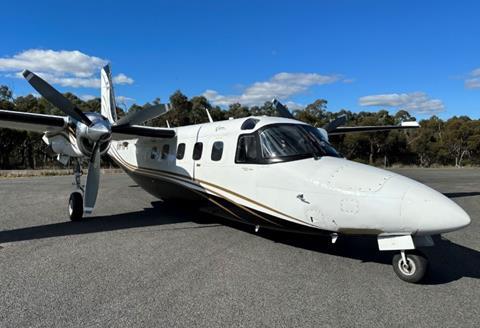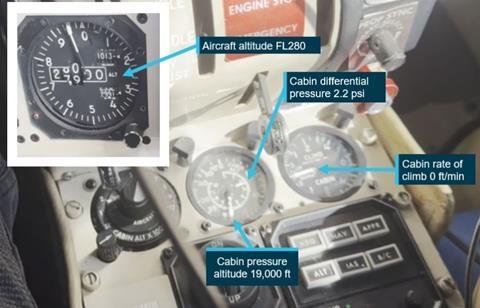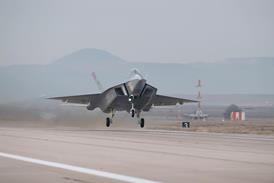Australian investigators have determined that an aerial mapping company deliberately allowed a Gulfstream 695A to continue operating at high altitude despite a known pressurisation problem, before a fatal accident attributed to pilot hypoxia.
Operated by Stawell-based AGAIR, the aircraft was en route from Toowoomba at 28,000ft to carry out line scanning – a photographic technique for fire detection and mapping – in the vicinity of Mount Gordon, on behalf of Queensland emergency services.
Although the twin-engined aircraft had a pressurised cabin, which gave it a service ceiling of 35,000ft without the need for supplemental crew oxygen, it also had a “known, long-term, unresolved” intermittent defect in the pressurisation system.
The aircraft could be operated unpressurised but this limited its altitude to 12,500ft, or up to 14,000ft for a 30min period.
Despite being aware of the pressurisation problem, AGAIR’s management – through a combination of “inaction, encouragement and, in some instances, direct involvement” – permitted the aircraft to continue operating at excessive cabin altitudes, says the Australian Transport Safety Bureau.

The defect would emerge during climb, when it would occasionally limit the maximum attainable cabin differential to 2.2psi (15.1kPa) rather than the normal 6.6psi.
This problem had not been recorded on the maintenance release, nor AGAIR’s safety-management system, nor raised at safety meetings, and engineers had been unsuccessful in resolving it.
Investigators detailed an email exchange with AGAIR’s head of flying operations – who was also the chief executive – in which the pilot mentioned the issue being mitigated by the “usual fixes” of descending and climbing, as well as the use of emergency oxygen.
The pilot warned that the risk of hypoxia “should not be normalised”, adding that requirements to fly at 28,000ft were typically causing 90min exposure to cabin altitudes of 19,000ft. The head of flight operations replied by thanking him for “keeping it going” over the previous few weeks.

After take-off on 4 November 2023 – less than two weeks after the email – the aircraft climbed to 28,000ft. Some 45min later the pilot requested to descend to 15,000ft, where it flew for 15min, before being cleared to climb back to 28,000ft.
But about 1h 50min into the flight, air traffic control lost contact with the pilot. Several attempts to re-establish communication, including message relay, were made before controllers called the pilot’s mobile phone. Based on the phone conversation, controllers initiated hypoxic emergency procedures.
Radio contact was regained, but recordings indicated the pilot’s situation was deteriorating, with slow speech, stuttering and operational mistakes.
No further responses were received. About 3h 30min after departure the aircraft slowed from its cruise speed of 236kt to 138kt and deviated from controlled flight, entering a descending left turn. The inquiry believes control inputs, a possible attempt to recover, were made at 10,500ft but the aircraft transitioned to a tight, right-hand helical descent – probably a spin – with a descent rate of 13,500ft/min.
It crashed 55km south-east of Cloncurry. Neither the pilot nor the two camera operators on board survived.
AGAIR’s head of flying operators, the inquiry says, was phoned by air traffic control about 37min before the collision, but did not communicate “critical” information about the known pressurisation defect.
“This took place at a time when air traffic control could have taken action to instruct the pilot to descend to a safe altitude,” it adds.
As a result, it states, controllers probably “reduced their vigilance” about possible hypoxia, particularly since the pilot had claimed to air traffic control that the oxygen system was operating normally.
While AGAIR has implemented a number of operational and maintenance changes – including a restriction on operating aircraft with cabin altitudes above 10,000ft – the inquiry says these “do not address in full” the matter of effective control.
There were “multiple instances” of failure to comply with aviation legislation and company standards, it adds, and AGAIR’s response does not detail its plans to assure future legislative and procedural compliance by management and pilots.


























